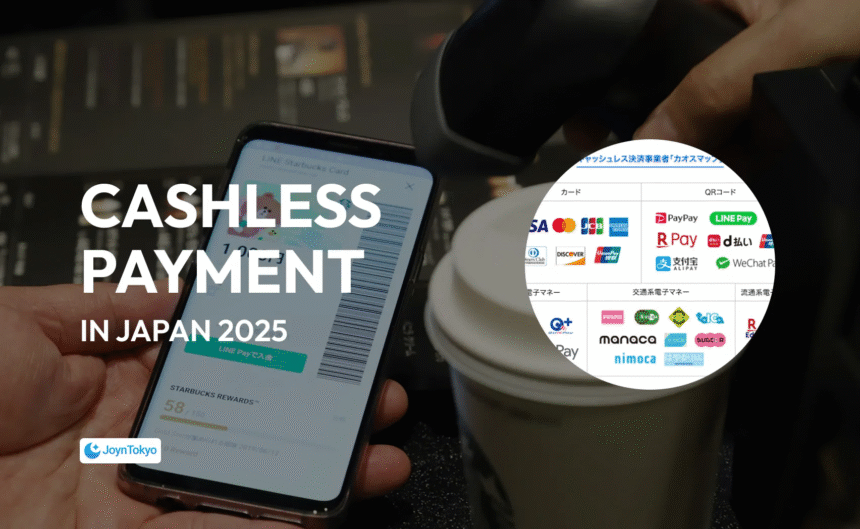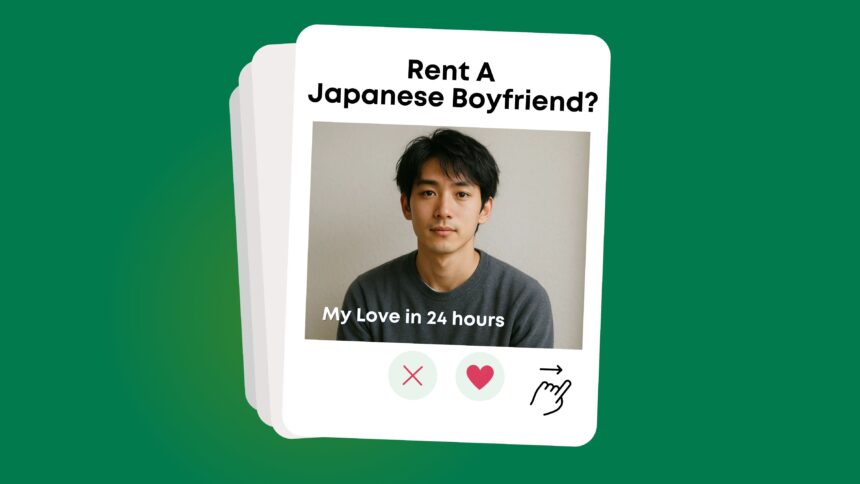Japan is no longer the cash-only outlier it was a decade ago. Today, 42.8% of consumer spending is made without cash (METI 2024), and the government is now aiming to increase that to 80% “sometime in the 2030s.” This guide will explain why the shift happened, as well as how you — as a newcomer or long-term resident — can go through daily life with the right mix of cards and apps, without needing to break a note once.
Japan’s Race Toward a Cashless Future
Japan’s cashless boom is the result of a blend of policy, rivalry, and pandemic-era habit changes.
Government goals and subsidies
The Cashless Promotion Council’s roadmap set — and met — a 40% share by 2024. Current grants still cover up to ¥300,000 of a small retailer’s terminal costs, so even mom-and-pop shops can accept cashless payments.
Pandemic-driven adoption
Social-distancing rules in 2020–2022 turned QR readers into hygiene tools. Convenience stores rolled out “cashless lanes,” shrinking queues and normalizing tapping and scanning.
Private-sector one-upmanship
Super-app PayPay handled 7.46 billion transactions in 2024, forcing rivals like Rakuten Pay and LINE Pay to boost cashback and foreign-card support.
The Four Main Cashless Options
Before choosing which way you should pay cashlessly, let’s see what the most popular types are.
1. IC transit e-money (Suica, Pasmo, ICOCA)

Plastic cards still work, but Mobile Suica or Mobile ICOCA on iPhone 8+ or Android with FeliCa let you skip the ¥500 deposit, as well as and top-up in English.
2. QR-code wallets (PayPay, Rakuten Pay, LINE Pay)

These are free to install on your phone, and are fundable via:
- Japanese bank accounts (instant)
- Selected foreign Visa / Mastercard (PayPay whitelists Revolut, Wise, etc.)
- Cash at convenience stores
PayPay’s 1–2% “Step” cashback program, plus zero merchant fees make it Japan’s most accepted wallet.
3. International contactless cards

Visa touch, Mastercard Contactless, and AMEX work at supermarkets, chain stores, and station kiosks. Independent cafés may still prefer domestic wallets — make sure to keep a back-up option.
4. Digital salary wallets

Since April 2023, employers may pay wages straight into approved e-money accounts, handy for freelancers waiting on a bank account.
Setting Up Each Method
A few minutes of prep saves hours of queueing and paperwork later.
Mobile Suica in three steps
- Download the Suica app (English menu available).
- Issue a virtual card and add it to Apple Pay/Google Wallet.
- Enable auto-recharge with a 3-D Secure-enabled card to avoid station kiosks.
Tip: From 6 March 2025, you can create Welcome Suica Mobile before landing in Japan — ideal for fresh arrivals.
QR wallets: first-time checklist
- Complete identity verification (MyNumber or passport photo).
- Link a card before your first scan; some shops refuse “cash-top-up-only” accounts.
- Peer-to-peer transfers inside each app are free — perfect for splitting izakaya bills.
Keeping fees low
Disable Dynamic Currency Conversion at overseas-issued card terminals. If your home bank adds foreign-transaction fees, route funds through a multi-currency account (such as Wise or Revolut) and top-up in yen.
Security, Taxes, and the Few Places Cash Still Wins
Japan’s fraud rate is low, yet care matters.
Quick security wins
- Turn on biometrics and low daily limits.
- Use in-app virtual card numbers when shopping online.
- Lost your phone? Remote-lock functions mean you can freeze all linked payments instantly.
Paying bills and taxes
Utility bills still arrive with a barcode — scan it in PayPay or tap an IC card at a convenience store kiosk. National income tax accepts cashless receipts of up to ¥1 million per transaction (National Tax Agency).
When cash is still king
Some things, like rent, second-hand car purchases, bills, and some city-hall fees remain cash or bank-transfer only. Keep a modest cash buffer for these outliers.
Key Takeaways
- Carry at least two payment types: one IC card or QR wallet, plus a foreign contactless card.
- Update your apps regularly — ICOCA blocks log-ins on outdated versions after 1 May 2025.
- Watch conversion fees: pay in yen whenever possible. With those habits, you’ll discover that “going cashless” in Japan is now the path of least resistance rather than a techie novelty.





